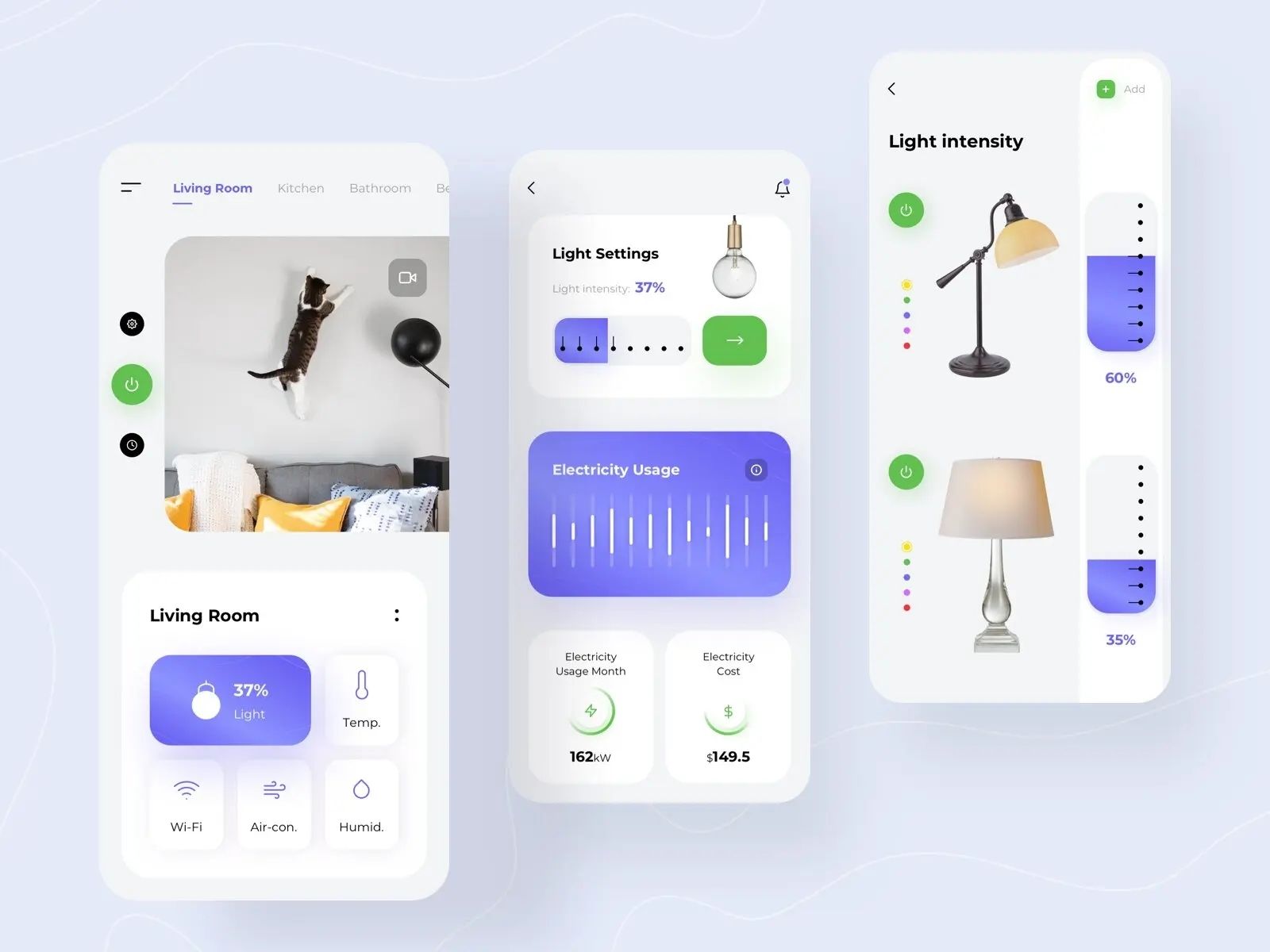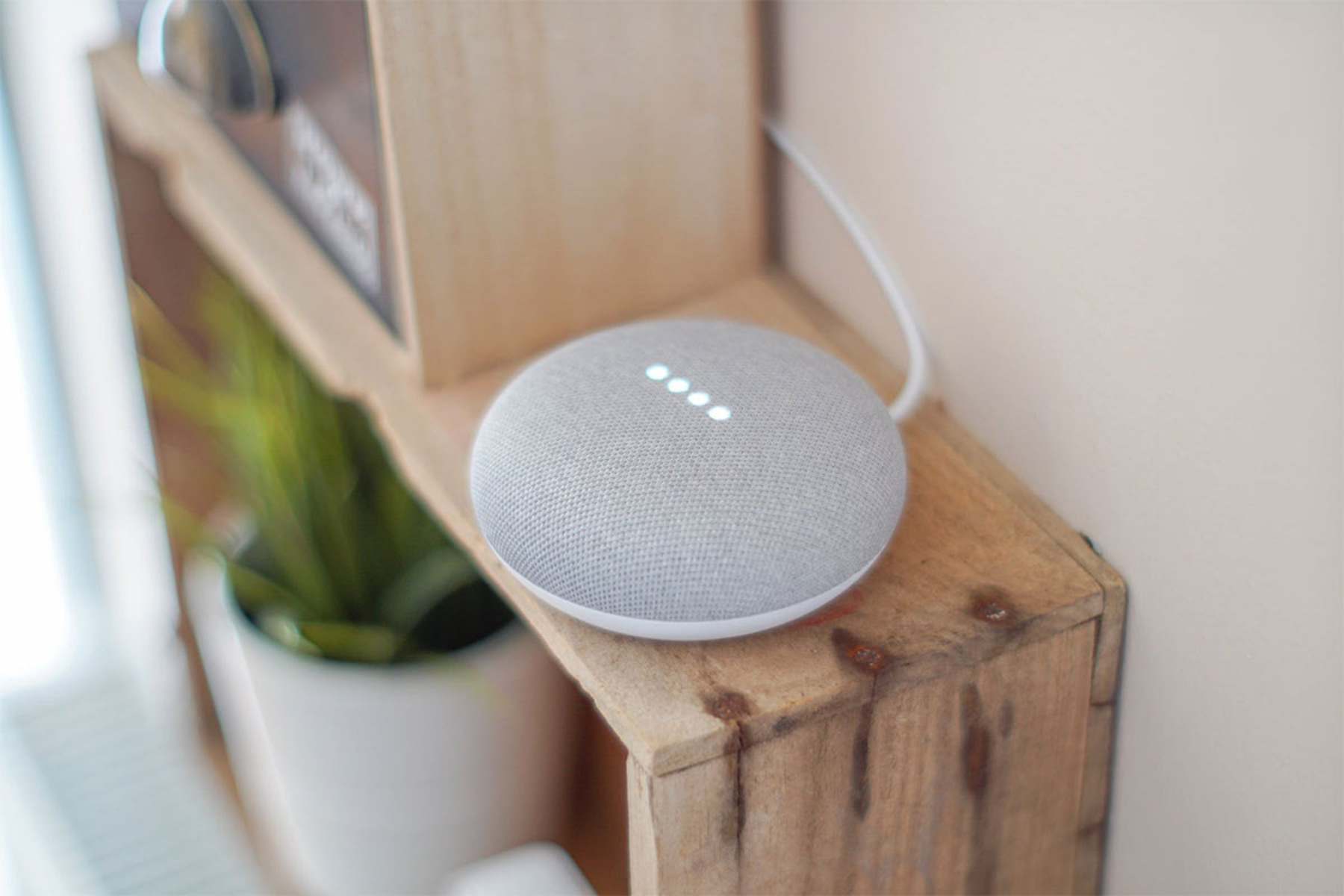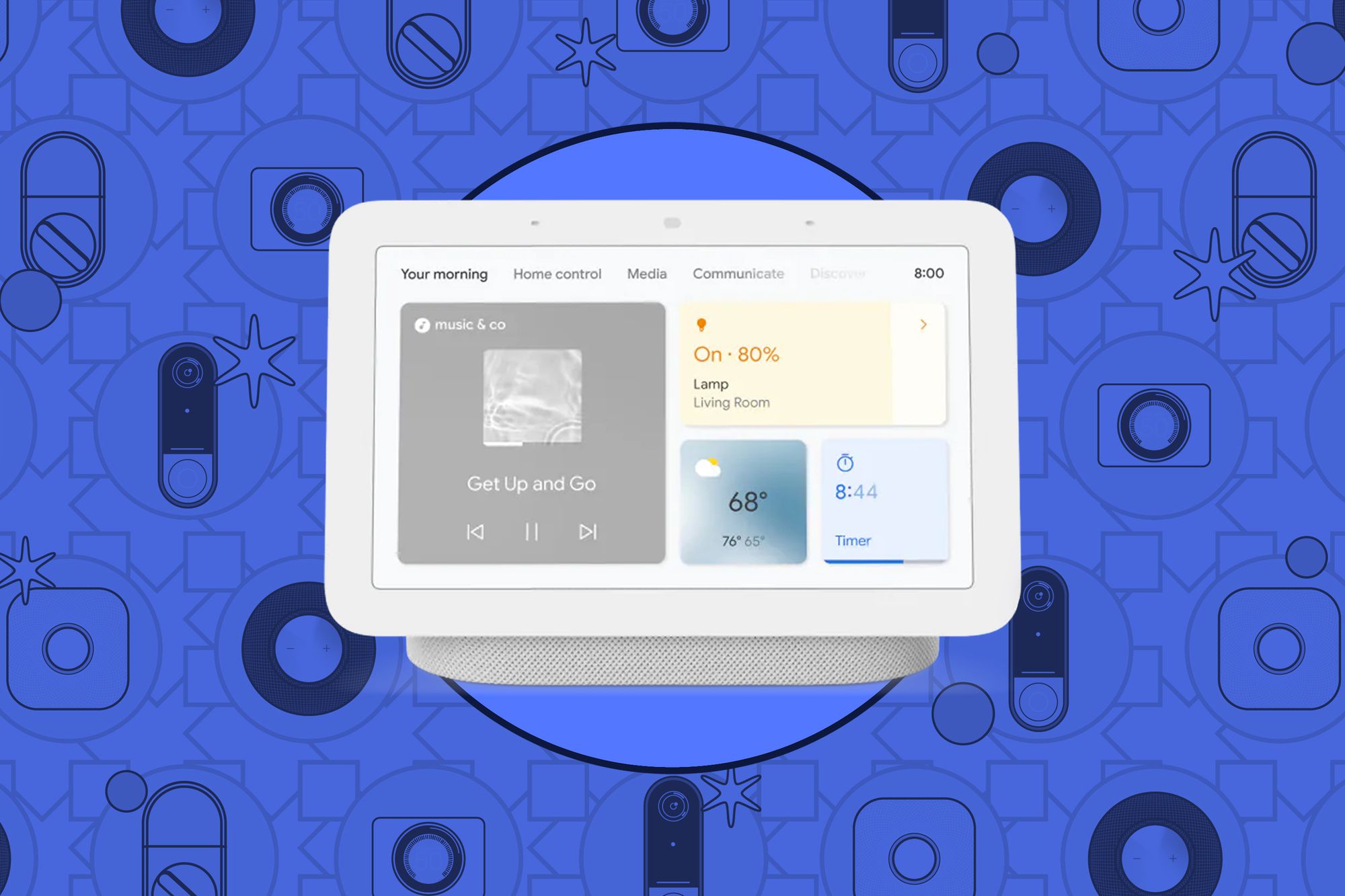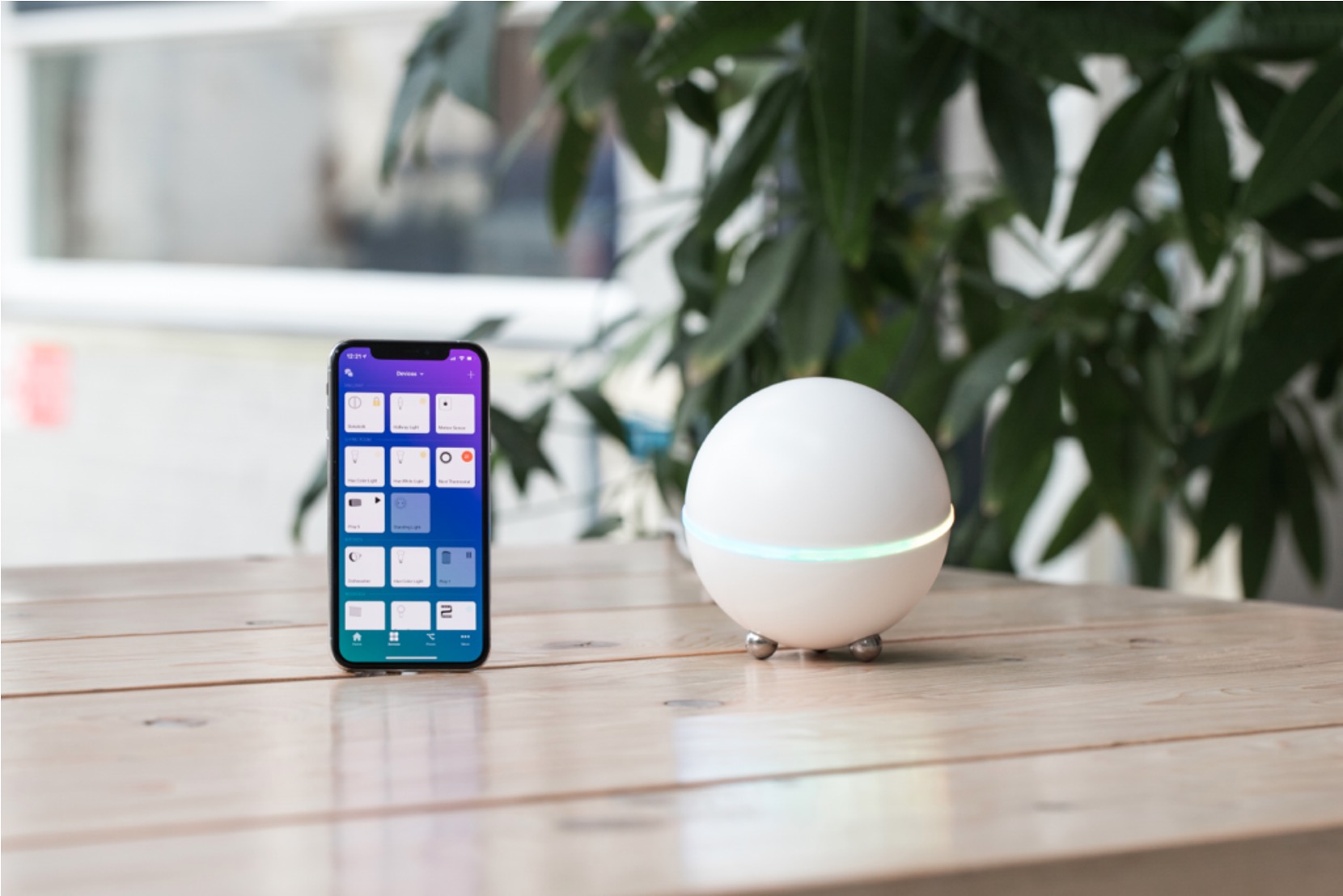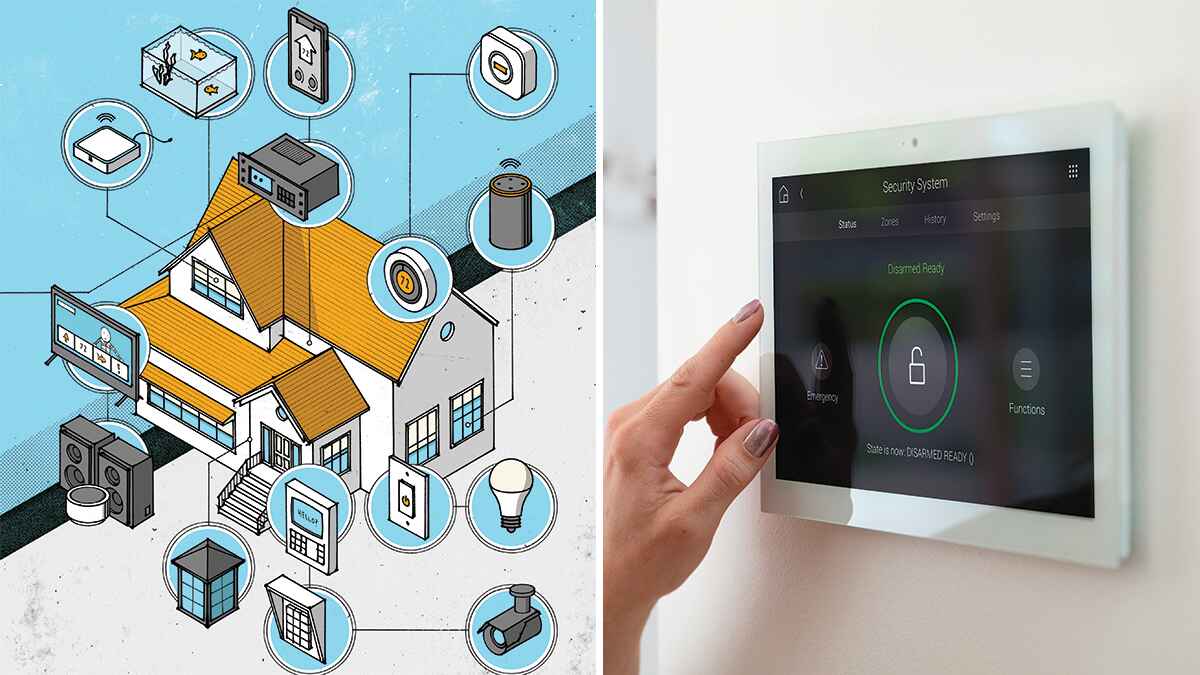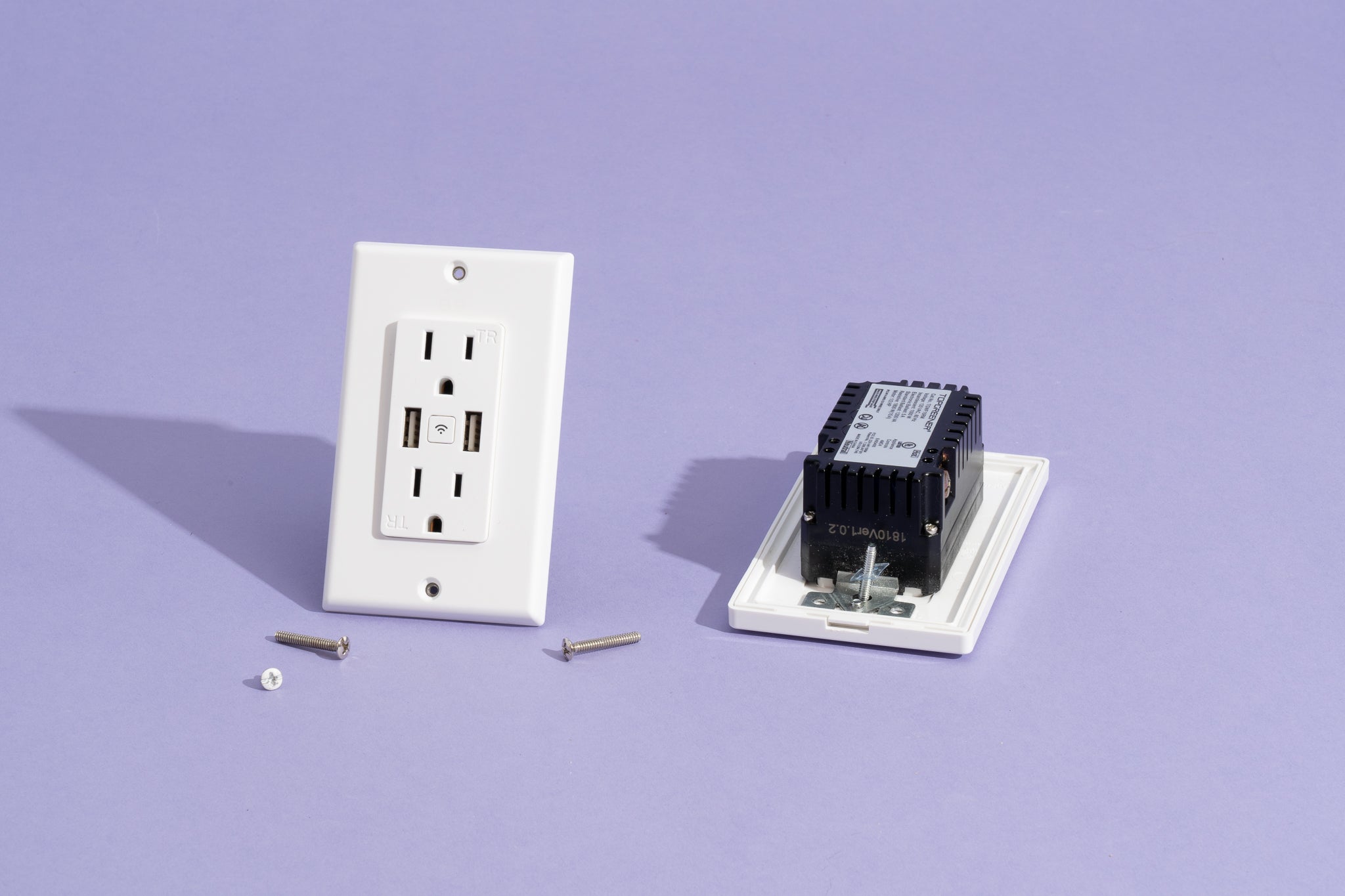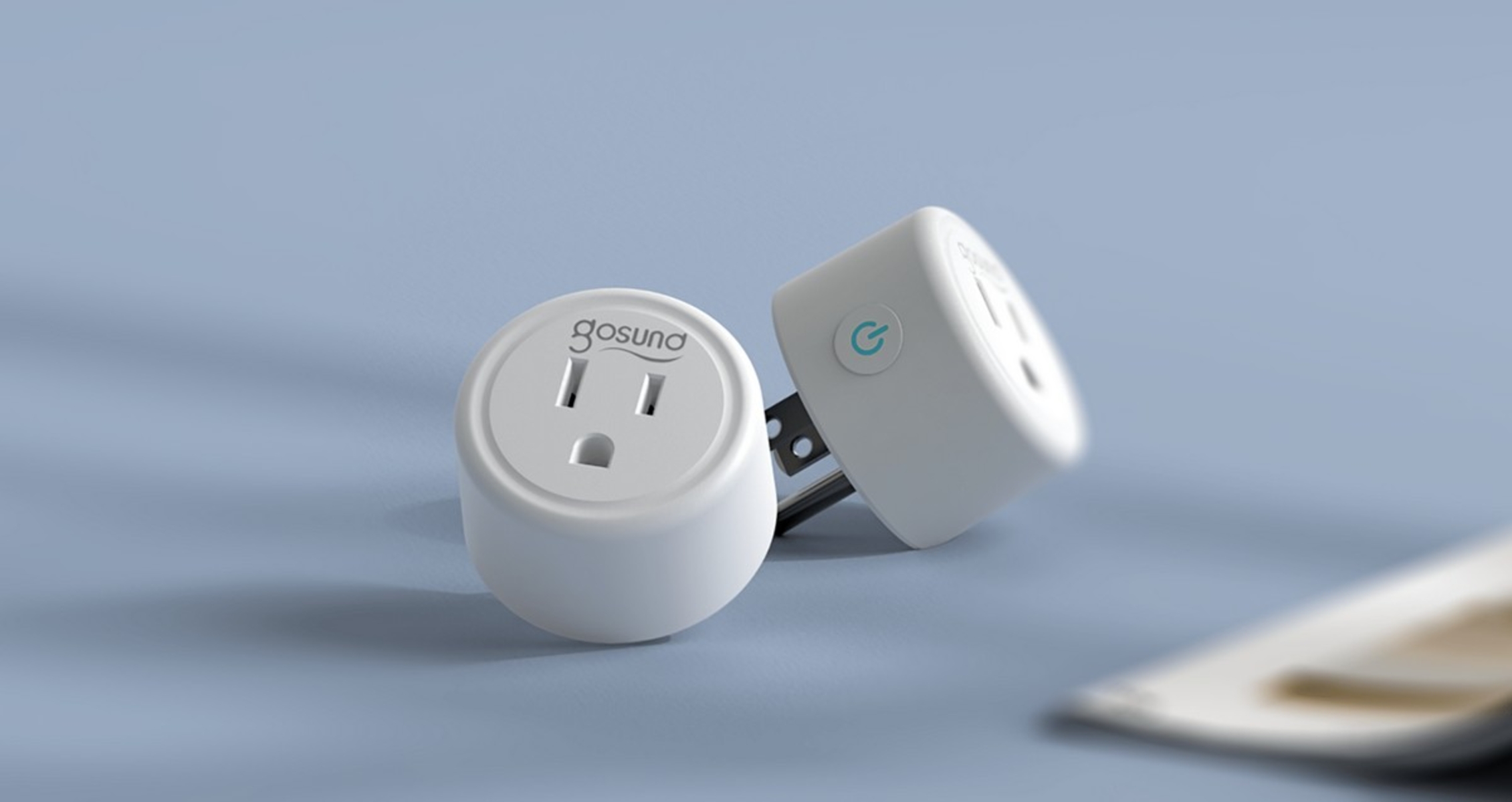Introduction
Welcome to the world of smart homes! With advancements in technology, our homes are becoming smarter and more convenient than ever before. A central aspect of this technological transformation is the smart home app. In this article, we will explore what a smart home app is, its benefits, how it works, and considerations to keep in mind when choosing one.
A smart home app is essentially a software application that allows users to control and manage various aspects of their home remotely. It acts as a hub or a control center that connects different smart devices and systems in your home, enabling you to monitor and control them with ease. Whether it’s adjusting the temperature, controlling the lighting, or managing security systems, a smart home app puts the power in your hands.
The beauty of a smart home app lies in its ability to streamline and simplify your daily routines. Imagine being able to turn on the lights, unlock the door, and set the thermostat to your desired temperature, all with just a few taps on your smartphone. With a smart home app, you can automate tasks and create customized settings to match your preferences, making your living space truly personalized and intuitive.
One of the major benefits of using a smart home app is convenience. No longer do you need to manually operate each device or system in your home. With a simple tap or voice command, you can control everything effortlessly. Forgot to turn off the lights before leaving? Don’t worry, just open the app and switch them off remotely. Want to create a cozy ambiance for movie night? Adjust the lighting and close the blinds with a swipe on your phone. The convenience factor alone can vastly improve your day-to-day living experience.
Another advantage of a smart home app is increased energy efficiency. With the ability to monitor and control devices like thermostats and lighting, you can optimize energy usage and reduce wastage. For example, you can set schedules to automatically adjust the temperature when you’re not at home, saving energy and contributing to lower utility bills. This level of control empowers you to create a more eco-friendly and sustainable living environment.
Aside from convenience and energy efficiency, a smart home app offers enhanced security and peace of mind. With the app, you can remotely monitor security cameras, lock or unlock doors, and receive alerts about any suspicious activities. This level of control provides a sense of security, especially when you’re away from home.
In the next sections, we will dive deeper into how a smart home app works, explore the features to look for when choosing one, and discuss popular smart home apps on the market. So, let’s get started on our journey to the world of smart homes and discover the possibilities that await!
What Is a Smart Home App?
A smart home app is a technology-driven application that allows users to control and manage various smart devices and systems in their homes. It serves as a centralized platform that connects all compatible smart devices, allowing users to access and control them remotely through their smartphones, tablets, or computers.
The primary purpose of a smart home app is to simplify and streamline the management of different aspects of your home. From adjusting the temperature, monitoring security cameras, controlling lighting, to managing home entertainment systems, a smart home app provides a convenient and intuitive way to interact with your smart devices.
These apps use a combination of wireless communication protocols such as Wi-Fi, Bluetooth, Zigbee, or Z-Wave to establish a connection between the app and the smart devices. Through this connection, users can send commands and receive real-time information, making it possible to control and monitor their home even when they are away.
One of the key features of a smart home app is its ability to create customized settings and automation routines. This means you can set up specific actions or scenarios that will occur automatically based on certain triggers. For example, you can program your lights to turn on gradually in the morning to mimic sunrise, or have your thermostat adjust the temperature when you arrive home from work.
Furthermore, smart home apps often support voice control through integration with popular virtual assistants like Amazon Alexa or Google Assistant. This allows users to control their smart devices through voice commands, adding an extra layer of convenience to the smart home experience.
Smart home apps also provide access to data and analytics, allowing users to monitor the energy consumption of their devices, track their usage patterns, and make informed decisions to increase energy efficiency. This feature not only helps reduce utility bills but also contributes to a more sustainable living environment.
It’s important to note that while a smart home app is a crucial component of a smart home ecosystem, it relies on compatible smart devices and systems to function properly. These devices can include smart thermostats, smart lighting, smart security systems, smart door locks, and more. The app acts as the bridge that brings all these devices together, offering a unified interface for control and management.
In the next sections, we will explore how a smart home app works, the features to look for when choosing one, and discuss some popular smart home apps currently available in the market. So, let’s continue our journey into the world of smart homes and discover the possibilities that these innovative apps offer!
The Benefits of Using a Smart Home App
Using a smart home app comes with a multitude of benefits that can significantly enhance your daily life and improve the functionality of your home. Let’s explore some of the key advantages of integrating a smart home app into your lifestyle:
- Convenience: One of the primary benefits of using a smart home app is the convenience it offers. With just a few taps on your smartphone or a voice command, you can easily control and manage various aspects of your home. Whether it’s adjusting the temperature, turning on the lights, or locking the doors, you have the power to do it all from anywhere, at any time.
- Energy efficiency: By utilizing a smart home app, you can enhance the energy efficiency of your home. The app allows you to automate tasks such as controlling the thermostat, turning off lights when they’re not in use, or monitoring energy consumption. This level of control helps in reducing energy wastage, ultimately leading to lower utility bills and a more sustainable lifestyle.
- Home security: A smart home app can provide peace of mind when it comes to home security. You can integrate security systems such as cameras, door locks, and motion detectors with the app, allowing you to monitor and control these devices remotely. Receive real-time notifications and alerts, and even check in on your home while you’re away, enhancing the overall security of your property.
- Customization: Smart home apps offer a high level of customization, allowing you to tailor your home settings to your preferences. Create personalized scenes or routines that automatically adjust your devices based on certain triggers or schedules. For example, you can set up a “Good Morning” scene that gradually brightens the lights, adjusts the thermostat, and plays your favorite music to wake you up.
- Integration with other devices: Smart home apps are designed to integrate with various smart devices and systems, offering a seamless connected experience. You can connect your app with virtual assistants like Amazon Alexa or Google Assistant, enabling voice control for your smart devices. This integration allows for a hands-free and effortless way to interact with your home.
These are just a few of the many benefits that come with using a smart home app. From convenience and energy efficiency to enhanced security and customization, these apps are revolutionizing the way we interact with our homes. In the next sections, we will delve deeper into how a smart home app works, the features to consider when choosing one, and explore some popular options available in the market today.
How Does a Smart Home App Work?
A smart home app acts as the central control hub for all your smart devices and systems, allowing you to manage and control them from a single interface. But how does it actually work? Let’s take a closer look at the inner workings of a smart home app:
1. Wireless Connectivity: Smart home apps rely on wireless communication protocols such as Wi-Fi, Bluetooth, Zigbee, or Z-Wave to establish a connection between the app and the smart devices. These wireless protocols allow for seamless and reliable communication between the app and the devices, enabling you to control and monitor them remotely.
2. Device Compatibility: Before using a smart home app, it’s essential to ensure that your smart devices and systems are compatible with the app. Most smart home apps support a wide range of devices and brands, but it’s always recommended to check the compatibility list to ensure seamless integration.
3. App Installation and Setup: To get started, you’ll need to download and install the smart home app on your smartphone or tablet. Once installed, you’ll typically create an account or log in using your existing credentials. The app will then guide you through the setup process, which usually involves connecting the app to your home’s Wi-Fi network and discovering and adding your smart devices.
4. Device Discovery and Pairing: During the setup process, the smart home app will scan for nearby compatible devices and guide you through the pairing process. This involves putting the devices in pairing mode and following the instructions in the app to establish a connection. After successful pairing, the devices will appear in the app, ready to be controlled and managed.
5. User Interface: Once all your smart devices are discovered and paired with the app, you’ll have access to a user-friendly interface that allows you to control and manage your devices. The interface may vary depending on the app, but it typically displays a dashboard or home screen with icons or tiles representing each connected device. You can tap on these icons to access device controls, adjust settings, or create scenes and automation routines.
6. Control and Automation: Using the smart home app, you can control your connected devices individually or create automation routines that trigger specific actions based on certain events or schedules. For example, you can set up a routine that turns on the lights and adjusts the thermostat when you arrive home or schedule the lights to turn off automatically at bedtime.
7. Voice Control Integration: Many smart home apps offer integration with popular virtual assistants like Amazon Alexa or Google Assistant. This allows you to control your smart devices using voice commands. Simply enable the integration within the app and link your virtual assistant account to enjoy a hands-free and convenient way to interact with your home.
Smart home apps provide a unified and user-friendly interface that brings together all the functionalities of your smart devices. They offer seamless control, automation, and customization options, making it easier than ever to create a truly smart and interconnected home.
In the next sections, we will explore the essential features to consider when choosing a smart home app, discuss some popular options available on the market, and delve into the steps involved in setting up and using a smart home app.
Features to Look for in a Smart Home App
When choosing a smart home app, it’s important to consider its features and capabilities to ensure that it meets your specific needs and preferences. Here are some key features to look for:
- Device Compatibility: Check if the app supports a wide range of smart devices and brands. Compatibility ensures that you can connect and control all your devices seamlessly through the app.
- Intuitive User Interface: A user-friendly interface is essential for ease of use. Look for an app that offers a clean layout, clear navigation, and intuitive controls, allowing you to quickly and effortlessly manage your smart devices.
- Customization Options: The ability to customize settings and create personalized scenes or automation routines adds flexibility and enhances the smart home experience. Look for an app that allows you to program specific actions based on triggers or schedules to match your lifestyle.
- Voice Control Integration: Integration with popular virtual assistants like Amazon Alexa or Google Assistant provides hands-free control of your smart devices. Check if the app supports voice commands, as this can greatly enhance convenience and accessibility.
- Remote Access: Ensure that the app allows you to control and monitor your smart devices remotely. This feature enables you to manage your home even when you’re away, providing peace of mind and flexibility.
- Energy Monitoring: Look for an app that provides energy monitoring capabilities. Being able to track and analyze energy consumption helps you make informed decisions to increase energy efficiency and reduce utility bills.
- Security Features: The app should prioritize security and offer features to protect your smart home devices and data. Look for features like secure logins, encrypted communication, and options for two-factor authentication.
- Compatibility with Third-Party Integrations: Check if the app supports integration with other smart home platforms, protocols, or devices. This allows for a more extensive and interconnected smart home ecosystem.
- Regular Updates and Customer Support: Ensure that the app is regularly updated with new features and bug fixes. Reliable customer support is also crucial in case you encounter any issues or have questions about the app’s usage.
These features will greatly enhance your smart home experience and provide the functionality you desire. It’s important to research and compare different smart home apps to find the one that best suits your needs and integrates seamlessly with your smart devices.
In the next section, we will explore some popular smart home apps available on the market, highlighting their unique features and benefits.
Popular Smart Home Apps on the Market
With the rising popularity of smart homes, there are several smart home apps available on the market that offer a range of features and functionalities. Let’s explore some of the most popular smart home apps:
- Amazon Alexa: Alexa, the virtual assistant by Amazon, offers a comprehensive smart home app. With Alexa, you can control a wide range of compatible smart devices using voice commands. The app supports customization, routines, and integration with various smart home platforms.
- Google Home: Google Home, powered by Google Assistant, is another popular smart home app. It allows you to control smart devices, set up routines, and access a variety of smart home features. It offers seamless integration with Google services and the ability to control devices through voice commands.
- Apple HomeKit: HomeKit is Apple’s smart home platform, and the Home app is the central control hub. It offers a user-friendly interface to control and monitor HomeKit-compatible devices. The app supports automation, custom scenes, and offers enhanced security features.
- Samsung SmartThings: SmartThings is a versatile smart home app that works with various smart devices, regardless of the brand. It offers a wide range of automation options, customizable scenes, and supports third-party integrations. SmartThings also provides energy monitoring and enhanced security features.
- Wink: Wink is a popular smart home app that offers a simple and intuitive interface. It supports a wide variety of smart devices and offers automation options, shortcuts, and customizable scenes. The app also supports voice control through integration with popular virtual assistants.
- Hubitat Elevation: Hubitat Elevation is a local smart home automation platform that runs locally on a hub, ensuring privacy and reducing reliance on the internet. The app supports advanced automation, custom rules, and offers a high level of customization for power users who want granular control over their smart devices.
These are just a few examples of popular smart home apps available on the market. Each app has its strengths and features, so it’s important to consider your specific needs and the compatibility with your smart devices when choosing the right app for your smart home ecosystem.
In the next section, we will discuss the steps involved in setting up and using a smart home app, ensuring a smooth and hassle-free integration of your smart devices.
Steps to Set Up and Use a Smart Home App
Setting up and using a smart home app is a straightforward process. Here are the general steps involved in getting started with a smart home app:
- Download and Install: Begin by downloading the smart home app from the appropriate app store for your smartphone or tablet. Follow the on-screen instructions to install the app on your device.
- Create an Account: Once the app is installed, you may be prompted to create a new account or log in using your existing credentials. Register with the app by providing the necessary details such as your name, email address, and a secure password.
- Connect to Wi-Fi: Ensure that your smartphone or tablet is connected to your home’s Wi-Fi network. Open the app and follow the setup process, which will typically guide you through connecting the app to your Wi-Fi network.
- Discover Devices: The app will then prompt you to discover and connect your smart devices. This may involve pressing buttons or following specific instructions provided by the app to put your devices into pairing mode.
- Add Devices to the App: Once your devices are in pairing mode, the app will scan for nearby devices and display them on the screen. Select the devices you want to control through the app and follow the prompts to add them to your app’s device list.
- Organize and Customize: After adding the devices, you may have the option to organize them into rooms or groups within the app to make it easier to locate and control specific devices. You can then customize settings, create scenes, or set up automation routines according to your preferences.
- Explore Features and Controls: Familiarize yourself with the app’s features, controls, and options. Spend some time navigating through the interface, adjusting settings, and learning how to control and manage your devices effectively.
- Voice Control Integration: Many smart home apps offer integration with virtual assistants like Amazon Alexa or Google Assistant. If desired, enable voice control within the app and link your virtual assistant account to control your devices with voice commands.
- Regular Updates and Maintenance: Keep your smart home app up to date by installing any available updates. Regular updates ensure compatibility with new devices and improve the performance and security of the app. Additionally, regularly check for firmware updates for your smart devices to ensure they have the latest features and bug fixes.
Remember that the specific steps may vary depending on the app and the devices you are connecting. Always refer to the documentation or the app’s support resources for comprehensive instructions tailored to your specific smart home setup.
Once you have completed the setup process, you can start enjoying the convenience and control of your smart home app. Monitor and manage your devices remotely, create personalized scenes and automation routines, and experience the seamless integration of your smart devices through a single user-friendly interface.
In the next section, we will discuss security concerns related to smart home apps and provide insights on how to keep your smart home network secure.
Security Concerns with Smart Home Apps
While smart home apps provide convenience and control over your connected devices, it’s important to be aware of potential security concerns. Here are some key security considerations when using smart home apps:
- Secure Logins: Ensure that your smart home app offers secure login options, such as multi-factor authentication or biometric authentication, to protect unauthorized access to your app and connected devices.
- Strong Passwords: Set strong and unique passwords for your smart home app account to prevent unauthorized access. Avoid using common or easily guessable passwords and consider using a password manager to securely store your credentials.
- Regular Updates: Keep your smart home app up to date by regularly installing updates as they often contain security patches and fixes. Updates help protect against potential vulnerabilities that could be exploited by hackers.
- Secure Wi-Fi Network: Ensure your home Wi-Fi network is protected with a strong, unique password. Use encryption protocols such as WPA2 or WPA3 to secure your network and prevent unauthorized access to your smart devices and the app.
- Device Firmware Updates: Regularly check for firmware updates for your smart devices. Manufacturers often release updates that include security patches and bug fixes. Keep your devices up to date to minimize the risk of potential vulnerabilities.
- Router Security: Secure your router by changing the default username and password, disabling remote administration, and enabling firewall protection. These measures help protect your entire smart home network from external threats.
- Privacy Settings: Review the privacy settings within the smart home app and adjust them according to your preferences. Ensure that any data collection or sharing practices align with your comfort level and read privacy policies to understand how your data is handled.
- Secure Network Communication: Look for apps that use encryption and secure communication protocols to protect data transmission between your app, smart devices, and cloud servers. This helps prevent interception of sensitive information.
- Guest Access: If you have guests who will be using your smart home app, consider creating a separate guest network or setting up guest access privileges within the app. This prevents guests from accessing sensitive information or making unauthorized changes to your smart home settings.
- Regular Monitoring: Regularly monitor your smart home app and connected devices for any suspicious activity or unauthorized access. Enable notifications or alerts within the app to receive real-time updates on any detected security events.
By following these security best practices, you can minimize the risk of unauthorized access to your smart home network and ensure the privacy and security of your data and connected devices.
In the next section, we will explore the integration of smart home apps with other devices and platforms, allowing for a seamless interconnected smart home ecosystem.
Integration of Smart Home Apps with Other Devices
One of the key advantages of smart home apps is their ability to integrate with other devices and platforms, creating a seamless and interconnected smart home ecosystem. Let’s explore how smart home apps can integrate with other devices:
- Virtual Assistants: Smart home apps often support integration with popular virtual assistants like Amazon Alexa, Google Assistant, or Apple Siri. This integration allows you to control your smart home devices using voice commands, adding an extra layer of convenience to your smart home experience.
- Smart Speakers and Displays: Smart home apps can integrate with smart speakers or displays that have built-in virtual assistant capabilities. This allows you to control your smart devices through voice commands using the speaker or display as a central control hub.
- Smart TVs: Some smart home apps offer integration with smart TVs, allowing you to control your TV and other entertainment devices through the app. You can turn on/off the TV, adjust the volume, switch inputs, and even control streaming services, all from within the smart home app.
- Security Systems: Smart home apps can integrate with security systems, including cameras, motion detectors, and door/window sensors. This integration enables you to monitor and control your security devices from the app, receive real-time notifications, and even review recordings or live footage.
- Smart Locks: Integration with smart locks allows you to remotely lock or unlock your doors using the smart home app. You can grant access to visitors or monitor entry and exit activity through the app, enhancing both convenience and security.
- Thermostats: Smart home apps can integrate with smart thermostats, enabling you to remotely control the temperature settings in your home. Adjust the thermostat from anywhere to ensure a comfortable environment and save energy by optimizing temperature settings.
- Smart Appliances: Integration with smart appliances, such as refrigerators, ovens, or washing machines, allows you to monitor and control their settings through the smart home app. Receive alerts, schedule tasks, and even receive updates on maintenance or consumables needing replacement.
- Smart Plugs and Switches: Smart home apps can integrate with smart plugs or switches, enabling you to control traditional devices that are plugged into these smart accessories. Turn devices on or off remotely, schedule their operation, or monitor energy consumption through the app.
- Third-Party Apps and Platforms: Many smart home apps support integration with third-party apps and platforms, expanding the functionality and possibilities of your smart home ecosystem. For example, integration with weather apps can allow your smart home to adjust temperature settings based on weather conditions.
These are just a few examples of how smart home apps can integrate with other devices to create a cohesive smart home experience. The integration capabilities vary depending on the app and the devices you have in your home. Consider your specific needs and the compatibility of your devices when choosing a smart home app.
In the next section, we will conclude our discussion and summarize the key points covered in this article.
Conclusion
Smart home apps have revolutionized the way we interact with our homes, offering convenience, control, and enhanced functionality. Through these apps, we can easily manage and monitor various aspects of our homes, from adjusting the temperature and controlling lighting to managing security systems and entertainment devices.
In this article, we explored what smart home apps are and discussed the benefits they provide. We learned that smart home apps offer convenience, energy efficiency, enhanced security, customization options, and integration with other devices and platforms. These apps allow us to streamline our daily routines, increase energy savings, and enjoy a personalized and interconnected living space.
Additionally, we looked at the steps involved in setting up and using a smart home app, as well as the security concerns to keep in mind. By following best practices and regularly updating our apps and devices, we can maintain a secure and protected smart home environment.
We also discussed some popular smart home apps available on the market, highlighting their unique features and benefits. It’s important to consider compatibility with your devices, ease of use, customization options, and integration capabilities when choosing the right app for your smart home ecosystem.
As technology continues to advance, smart home apps will likely become more sophisticated and offer even more features to further enhance our homes and lifestyles. It’s an exciting time to embrace the potential of smart home technology and enjoy the convenience and control it brings.
So, whether you’re a tech enthusiast or someone looking to simplify your life, consider exploring the world of smart home apps and discover the endless possibilities that await you in the realm of smart living.







